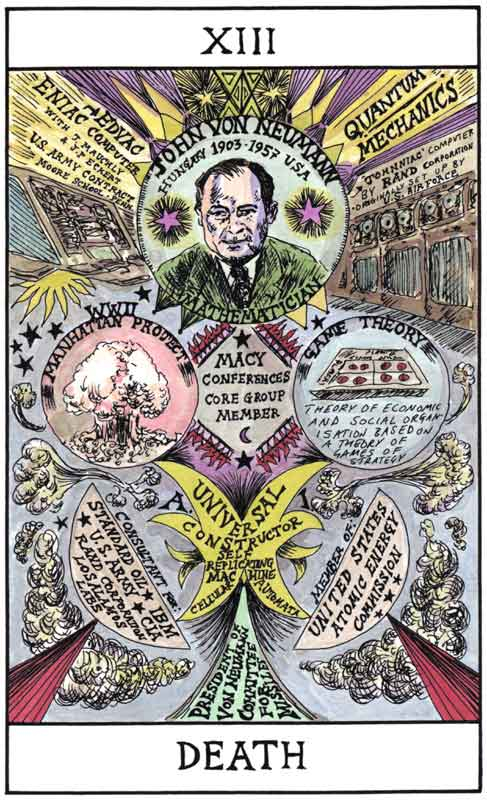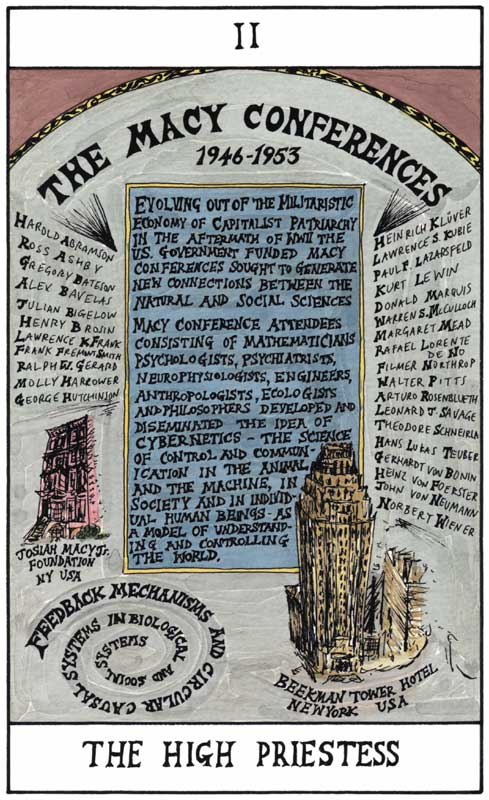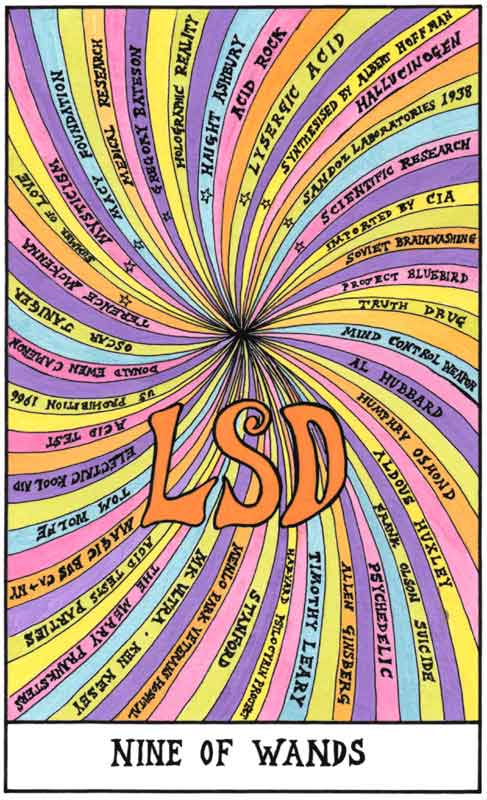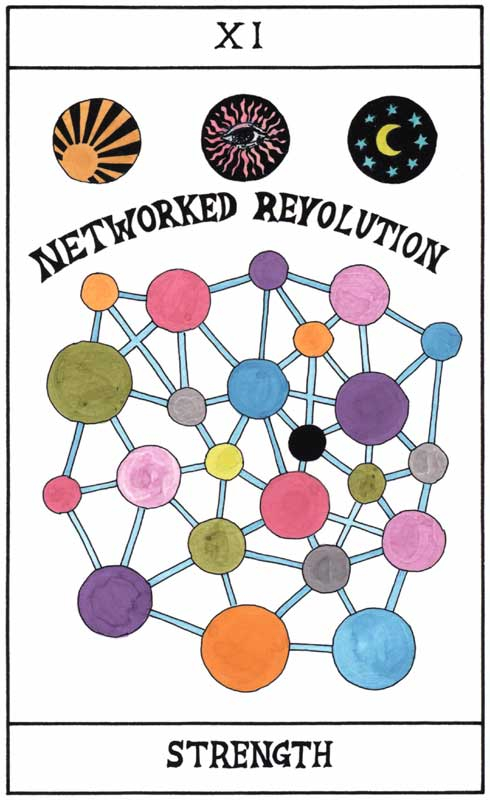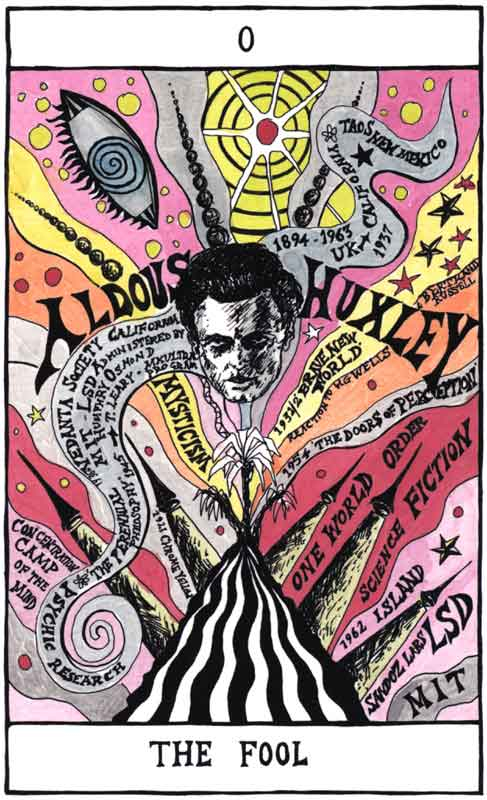
HEXEN 2.0 looks into histories of scientific research behind government programmes of mass control, investigating parallel histories of countercultural and grass roots movements. HEXEN 2.0 charts, within a framework of post-WWII U.S. governmental and military imperatives, the coming together of scientific and social sciences through the development of cybernetics, the history of the internet, the rise of Web 2.0 and increased intelligence gathering, and implications for the future of new systems of societal manipulation towards a control society.
HEXEN 2.0 specifically investigates the participants of the seminal Macy Conferences (1946-1953), whose primary goal was to set the foundations for a general science of the workings of the human mind. The project simultaneously looks at diverse philosophical, literary and political responses to advances in technology including the claims of Anarcho-Primitivism and Post Leftism, Theodore Kaczynski/The Unabomber, Technogaianism and Transhumanism, and traces precursory ideas such as those of Thoreau, Warren, Heidegger and Adorno in relation to visions of utopic and dystopic futures from science-fiction literature and film.
Based on actual events, people, histories and scientific projections of the future, and consisting of alchemical diagrams, a Tarot deck, photo-text works, a video and a website, HEXEN 2.0 offers a space where one may use the works as a tool to envision possible alternative futures.
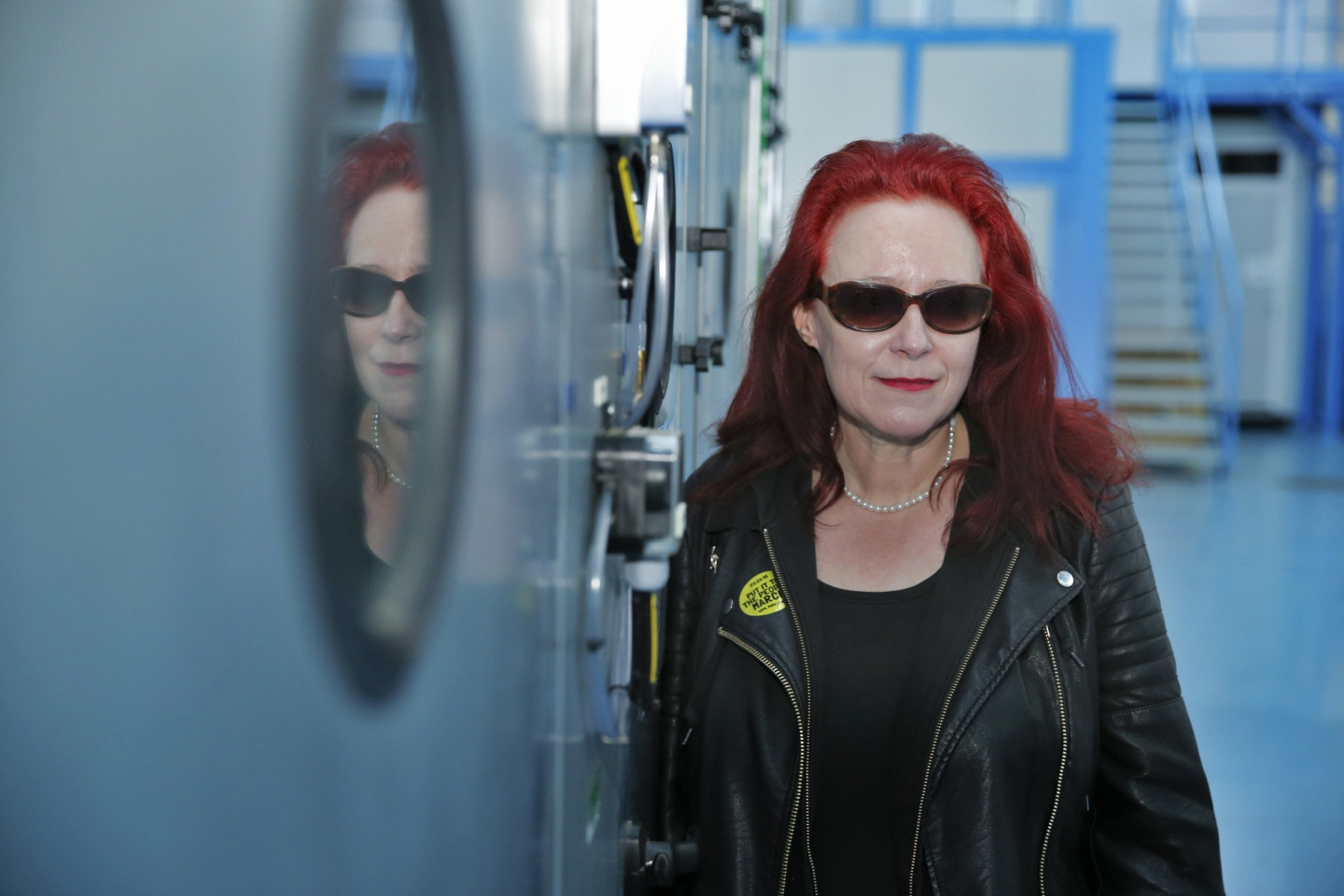
Suzanne Treister (b.1958 London UK) studied at St Martin's School of Art, London (1978-1981) and Chelsea College of Art and Design, London (1981-1982) and is based in London and the French Pyrennes, having lived in Australia, New York and Berlin. Initially recognized in the 1980s as a painter, she became a pioneer in the digital/new media/web based field from the beginning of the 1990s, making work about emerging technologies, developing fictional worlds and international collaborative organisations. Utilising various media, including video, the internet, interactive technologies, photography, drawing and watercolour, Treister's work has engaged with eccentric narratives and unconventional bodies of research to reveal structures that bind power, identity and knowledge. Often spanning several years, her projects comprise fantastic reinterpretations of given taxonomies and histories that examine the existence of covert forces at work in the world. An ongoing focus of her work is the relationship between new technologies, society, alternative belief systems and the potential futures of humanity.
Recent solo and group exhibitions include:
The Warburg Institute, London (2025); Tate Modern, London; Kunsthalle Wien, Vienna; United Nations, New York (2024); 14th Shanghai Biennale; Museion Bolzano, Italy; Centre Pompidou-Metz; Helsinki Biennial, Finland; ARoS Kunstmuseum, Denmark; P.P.O.W. Gallery, New York (2023-4), High Line, New York; Plateforme 10, Lausanne; Hayward Gallery Touring; Albertinum, Dresden; Somerset House, London; Palace of Culture and Science, Warsaw (2022) 7th Athens Biennale, Greece; Muzeum Sztuki, Lodz, Poland; 34th Ljubljana Biennale of Graphic Arts; Kunstmuseum Appenzell, Switzerland (2021); Schirn Kunsthalle, Frankfurt; Yerevan Biennial, Armenia (2020); Istanbul Biennial, Turkey; Moderna Museet, Stockholm, Sweden (2019); Busan Biennale, Korea; CAPC, Bordeaux, France; EKKM, Tallinn, Estonia; CCCB, Barcelona; ZKM, Karlsruhe, Germany (2018); IMMA, Dublin; Haus der Kulturen der Welt, Berlin; Montreal Museum of Fine Arts, Canada (2017); Liverpool Biennial, UK; V&A Museum, London; Bildmuseet, Umea, Sweden; Bard Hessel Museum, NY, USA (2016); ICA, London, England; Centre Pompidou, Paris.
